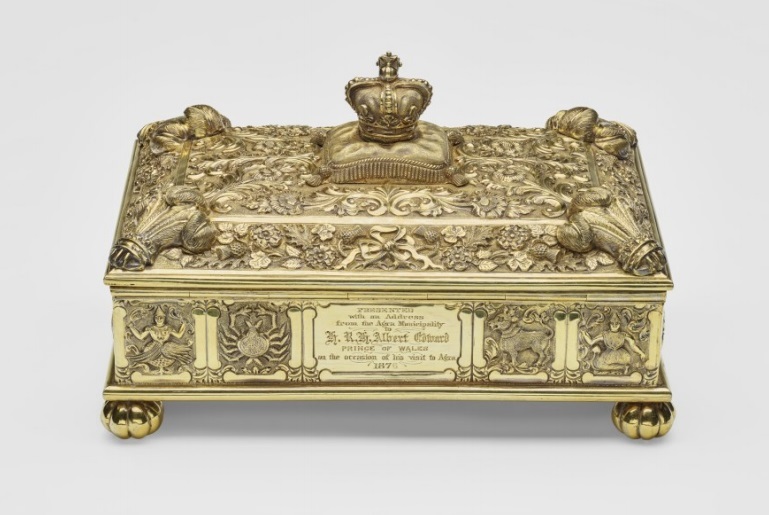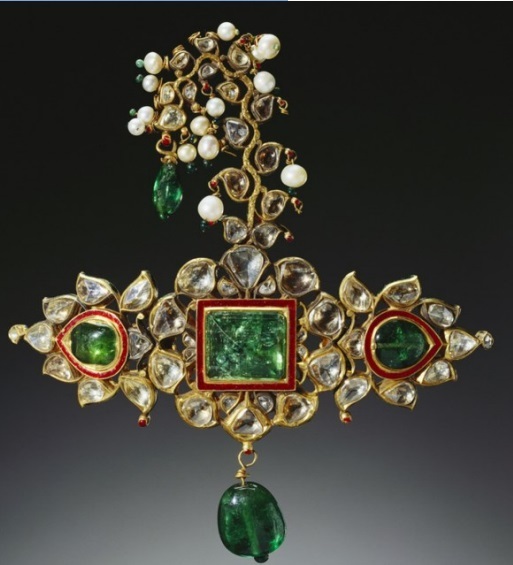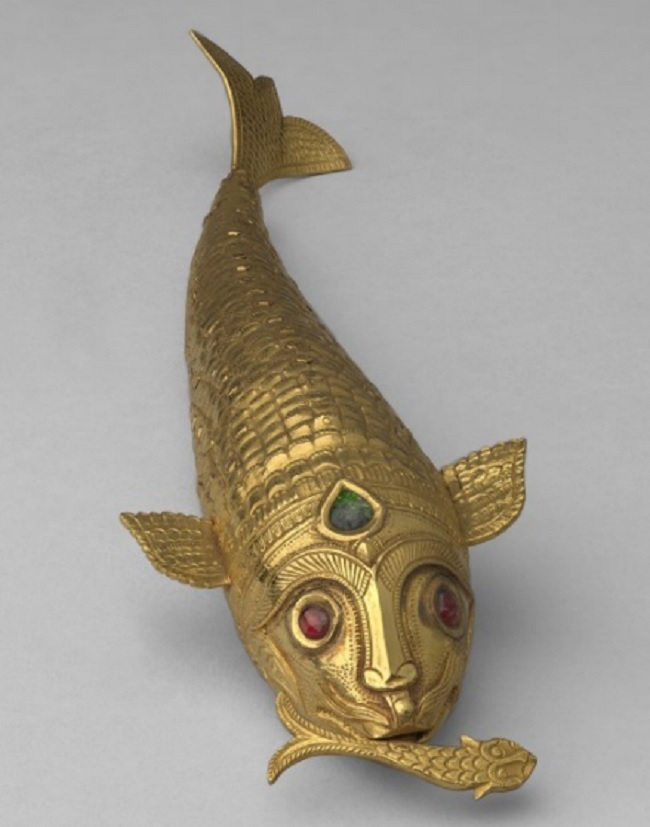Glittering treasures from the Indian subcontinent are to go on display in Scotland for the first time in over 130 years.
Dazzling works of art that brought the wonders of India to Britain at the end of the 19th century will be on show in a new exhibition opening at The Queen’s Gallery, Palace of Holyroodhouse tomorrow (Friday, 15 December).
Exploring the historic visit made by Albert Edward, Prince of Wales (later King Edward VII), Splendours of the Subcontinent: A Prince’s Tour of India 1875–6 brings together some of the finest examples of Indian design and craftsmanship, presented to the Prince as part of the traditional exchange of gifts.

A silver gilt address casket
Encouraged by his mother, Queen Victoria, the Prince of Wales undertook a four-month tour of the Subcontinent in October 1875, travelling nearly 10,000 miles by land and sea. By the end of the trip, Sir William Howard Russell, writer of the official tour diary, noted that the Prince had: ‘seen more of the country in the time than any living man’.
The royal tour was an opportunity to establish personal and diplomatic links with local Indian rulers, and sought to strengthen ties between the Subcontinent and the British Crown before the declaration of Queen Victoria as Empress of India.
It included visits to a number of royal courts, allowing the Prince to experience the splendour and spectacle of Indian courtly traditions, and to learn about the cultures, history and religions of a country he would one day rule.

A pair of morchals (fly whisks) constructed of peacock feathers, inlaid with diamonds
As was the custom in India, guests were presented with elaborate gifts by their hosts. Many of those received by the Prince related to the traditions of a durbar (audience), including a magnificent gold service given by the Maharaja of Mysore.
The set of ten pieces, which was often referred to as the ‘Service of State’ during the tour, contains ceremonial objects such as an attardan (perfume holder), rosewater sprinklers and a paandan (betel-nut holder), items associated with welcoming guests to an Indian court.
As the Prince of Wales entered towns and cities, he was presented with magnificent caskets containing formal addresses. These addresses were read to the Prince to welcome him, and he was expected to give a short reply.
During his visit to Agra in January 1876, Albert Edward was given a silver-gilt casket made by the Edinburgh-based goldsmiths Marshall and Sons, probably commissioned by a British official in India. Engraved with the Prince’s name, it is decorated with Hindu and zodiac symbols, shamrocks, roses and thistles.

A gold and enamelled sirpech (turban ornament), detailed with emeralds, diamonds and pearls
The Viceroy of India, Lord Northbrook had advised local rulers to select gifts that were the finest examples of local craftsmanship, such as the intricately enamelled vessels from Jaipur and arms from Alwar.
In Kashmir, a region known for the production of exquisite textiles, the Maharaja presented the Prince of Wales with a green silk-brocade sash, embellished with silver-gilt thread and woven with a ‘buta’ pattern. This teardrop-shaped motif was adapted by weavers in Europe, most notably in Paisley. In the first half of the 19th century, Paisley was the foremost producer of Paisley shawls, and the pattern has since become synonymous with the Scottish town.
By the end of the tour the Prince had received over 2000 gifts from the local rulers he had met. Recognising the cultural value and artistic merit of these items, on his return to Britain he made arrangements for them to be placed on public display.
The exhibition, The Prince of Wales’s Indian Collection, travelled Britain and Europe between 1876 and 1883 to allow as many people as possible to view the extraordinary works from the Subcontinent.

An ornamental gold articulated fish, with ruby eyes and an emerald set into its head
From 1879 to 1881 the gifts toured Scotland, going on display at the Museum of Science and Art (now the National Museum of Scotland) in Edinburgh, and the Corporation Galleries of Art (now the McLellan Galleries) in Glasgow. In Aberdeen the gifts were displayed at the Town and County Hall, and funds generated from the entrance fee were used towards the construction of Aberdeen Art Gallery. By the end of the tour, they had been seen by over 700,000 people in Scotland.
Splendours of the Subcontinent: A Prince’s Tour of India 1875–6, developed in collaboration with Cartwright Hall, Bradford, and New Walk Museum & Art Gallery, Leicester, celebrates the long-standing relationship between the UK and India, and the vibrant cultural history of the region.
The exhibition forms part of the 2017 UK-India Year of Culture, a year-long programme of events led by the British Council, in cooperation with the Indian High Commission.
Splendours of the Subcontinent: A Prince’s Tour of India 1875–6 is at The Queen’s Gallery, Palace of Holyroodhouse, runs from 15 December–22 April 2018.
Click HERE for more visitor information and tickets for The Queen’s Gallery, at the Palace of Holyroodhouse.
TAGS

